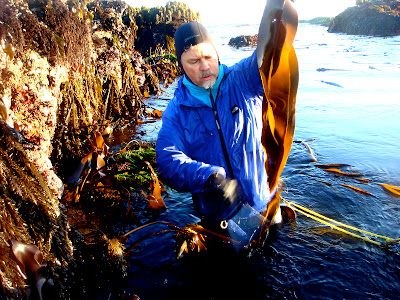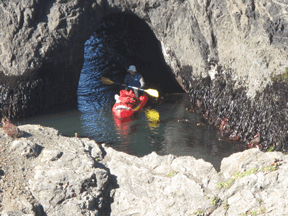With a top Bay Area restaurant ranking from both Michelin and the Zagat Survey, three stars from SF Chronicle Food Critic Michael Bauer, and president of Northern California Japanese Restaurant Association, Yoshi Tome one of Northern California’s most respected restaurateurs.
A native of Okinawa, Japan, Yoshi earned a bachelor’s of education degree before coming to California’s San Joaquin Valley in 1981 for a six-month teacher exchange program. That’s when he fell in love with the United States.
After his teaching stint, Yoshi relocated to Sausalito, where for three years he managed the restaurant he would later buy and rename Sushi Ran.
In 1986 Sushi Ran was a 26-seat sushi bar restaurant with three sushi chefs and a three-person wait staff. By 1996, Yoshi expanded the kitchen and restaurant to add a 25-seat dining room with six sushi chefs and 45 total employees.
To add depth to his exceptional cuisine, Yoshi hired a classically trained, credentialed culinary chef to create an inventive menu featuring a sophisticated fusion of traditional Japanese sushi and Pacific cuisine, and pair it with an extensive list of premium sakes and wines. For this, he would need more room.
In 2000, Yoshi took over the space next door and transformed it into a sophisticated wine and sake bar with outdoor patio to expand Sushi Ran’s seating to over 90.
Giving back to his community, Yoshi is a director with Sausalito Chamber of Commerce, five-term president of the Japanese Restaurant Association of Northern California, and a key member of the Asian Chef’s Association. A total jock at heart Yoshi loves coaching rugby as well as yoga, hiking and cycling.
Recent Recognition and Awards
2009 Tome receives Distinguished Citizen award from Japanese Government
2009 Sushi Ran earns Michelin Recommendation
2008 Sushi Ran earns Michelin Recommendation
2007 Sushi Ran earns Michelin Star
2006 Sushi Ran earns Michelin Star
2005 “Business Citizen of the Year” Marin Chambers of Commerce
2005 “American Dream” Award, Golden Gate Restaurant Association
2001 “Volunteer of the Year” Sausalito Park and Recreation Department
2009 Tome receives Distinguished Citizen award from Japanese Government
2009 Sushi Ran earns Michelin Recommendation
2008 Sushi Ran earns Michelin Recommendation
2007 Sushi Ran earns Michelin Star
2006 Sushi Ran earns Michelin Star
2005 “Business Citizen of the Year” Marin Chambers of Commerce
2005 “American Dream” Award, Golden Gate Restaurant Association
2001 “Volunteer of the Year” Sausalito Park and Recreation Department
SUSHI RAN’S CEO YOSHI TOME HONORED BY JAPANESE GOVERNMENT.
 |
| Yoshi Tome, receives his award from Japan’s Minister of Agriculture, Forestry and Fisheries |
Sausalito, CA—6 July 2009—Yoshi Tome, a native of Japan who has lived in the U.S. since 1981, was given a prestigious award by Japan’s Minister of Agriculture, Forestry and Fisheries for his accomplishments in the restaurant industry and his role in helping to bring Japanese culture and cuisine to the world.
Tome, among five honorees, was praised for the success he has achieved in his own high-profile restaurant, Sushi Ran, and for service for the past years eight years as president of the Northern California Japanese Restaurant Association. According to a statement by the Minister, the award is given annually “in recognition of individuals residing outside Japan who have made substantial contributions to introducing, popularizing
promoting Japanese cuisine, food ingredients and other foodstuffs overseas.”
The award ceremony took place in Tokyo on Monday, June 29. Other award recipients were Hideki Kato, Thailand, Iwao Komiyama, Argentina, Yoshio Nogawa, Singapore and Hajime Miyamae, Luxembourg.
Among the dignitaries who took part in the event were former Prime Minister Koizumi, actress Julie Wong, and the selection committee, Miyuki Adachi, Ph.D., Kagawa Nutrition University, Dr. Miyo Iwata, editor and senior writer, Nikkei, Inc, Isao Kumakura, Ph. D., National Museum of Ethnology, John Gauntner, journalist, and Yukio Hattori, Ph. D., president, Hattori Nutrition College.
Larry Knowles
Owner, Rising tide Sea Vegetables
Rising Tide Sea Vegetables is a locally owned cottage industry on the Mendocino coast in Northern California. Since 1981 we’ve been fine-tuning the techniques involved in wildcrafting, drying, and storing sea vegetables. We are one of only a few operations that harvest seaweed along this coast, and one of only two companies in the United States offering a full range of local and imported seaweed products.
Our business employs locally and maintains an active role in Mendocino’s community, participating in fundraisers, engaging in local decision-making, and supporting culinary entrepreneurs with Chubby’s, our commercial shared-use kitchen.
An Ocean-friendly Business
We’ve developed our harvesting techniques based on sound science, but our work is deeply personal too. Spending as much time as we do in the Pacific’s intertidal zones and witnessing the intricate balance of life there, we can hardly help but learn to revere these ecosystems and to respect the creatures that depend on the sea vegetables we harvest. Returning year after year to the same locations, we’ve come to know these places intimately, and to feel a personal responsibility for ensuring that they continue to flourish.
Unlike industrial-scale seaweed companies, we never use machines, motorized boats, or other harvesting equipment that could adversely affect the ocean environment. We are careful never to take too much from one area. We’ve perfected our hand-cutting techniques to leave the least impact, so that our seaweeds can continue to grow and reproduce. Owner Larry Knowles is a member of the Mendocino Seaweed Harvesters Stewardship Alliance, and respected advocate of sound environmental policy for seaweed harvesters.
In addition to our sustainable harvesting practices, Rising Tide has instituted a number of initiatives to lessen our impact globally. For one, we practice a triple bottom line: people, planet, profit. To avoid excess packaging, many of our seaweed products are sold in bulk, which also brings down the cost for our customers. Finally, our wholesale business is concentrated on the U.S. West Coast to minimize transportation impacts.
Harvesting Sea Veggies / Rising Tide Sea Vegetables
We’re often asked how we actually collect our sea vegetables. We do it entirely by hand, on coastal rocks, and without machinery. But that doesn’t give you much of a picture, does it? Here’s what we’re really doing out there in the frigid Pacific waters along the Mendocino Coast
A harvest day begins before dawn, during the lowest tides of spring and summer. Three of us squeeze into wetsuits, pile ourselves and our gear into the Rising Tide pickup truck and set out for the coast.
Rising Tide’s owner Larry Knowles has been monitoring our sites both from the cliffs and by kayak for weeks, and has chosen a seaweed bed that’s in prime condition for harvest. (We return to the same harvest sites year after year and keep records of the seaweed growth on each rock so that we can see for ourselves that we’re harvesting sustainably and not depleting the seaweed beds.)
We park as close as we can to a trail to the water, since we’ve got a bunch of stuff to haul down the cliffs. Each seaweed species grows differently and each requires unique equipment, but if we’re harvesting Kombu, we’ll unload wheelbarrows, a kayak, a kayak trundle, backpacks, knives, buckets, and large recycled bags. We wheelbarrow all this along trails, sometimes for a quarter of a mile, to get to the bluff overlooking the harvest location. Someone paddles the kayak out and anchors it. And then we grab our 30-gallon cork bags, and wade or swim out 100 yards or so to the Kombu bed.
In waist-deep water, we take out our special seaweed cutting knives and start harvesting the Kombu. On each plant, we cut only a portion of the blades, leaving a full-length section intact. Cutting this way allows the plant to reproduce and keep growing, and also leaves a very small visual footprint. Leave no trace!
We load up the kayak with our full bags of seaweed and ferry them back to the beach, where we deposit them on a sheet to keep them well out of sand and gravel. Then we load up the wheelbarrows with the seaweed and push them — 200 lbs each! — sometimes across sand (groan), then up the trails and back to the truck.
Amazingly, everything fits in the truck, even with 700 lbs of seaweed. We definitely notice weight difference driving back.
Back in the warm, sunny drying yard, that same morning, we spread out our vibrant, freshly harvested sea vegetables, covering 2,000 square feet of prepared drying surface. We get the last bit of seaweed laid out in the sun by 1:30. By 5:30, it’s almost dry, and we pull it into our drying room, where solar heat, fans and dehumidifiers finish the process. Rarely do we need to turn on heaters, but if we do, we’re sure to keep the temperature at 90 degrees.
Next morning, what was 700 lbs of seaweed is now about 100 lbs. We bag it up into large, food-grade bags that will go into the cool darkness of our dedicated storage room at Chubby’s Shared Use Kitchen, then packaged to send directly to you.
Voila! The finest seaweed products you can buy.
The reward for all this work — besides the satisfaction of offering some of the highest quality sea vegetables in the world — is the joy and privilege of spending time in these spectacularly beautiful, complex, and amazingly productive intertidal areas. What we harvest from this magical place is truly deserving of seaweed’s ancient renown as a food fit for the gods.






No comments:
Post a Comment